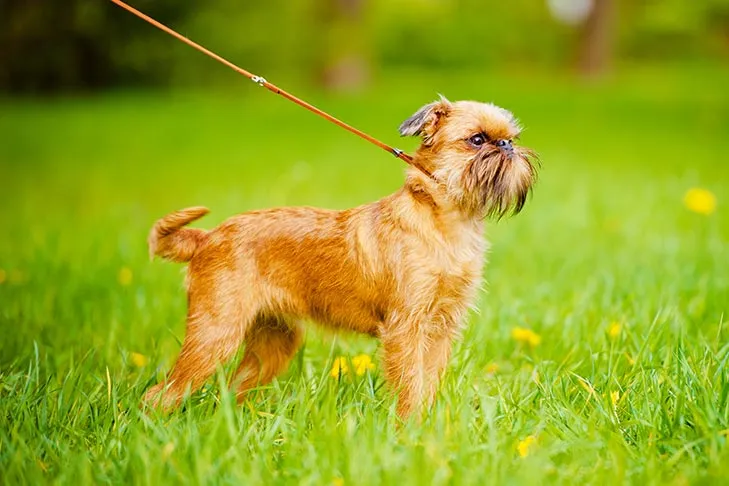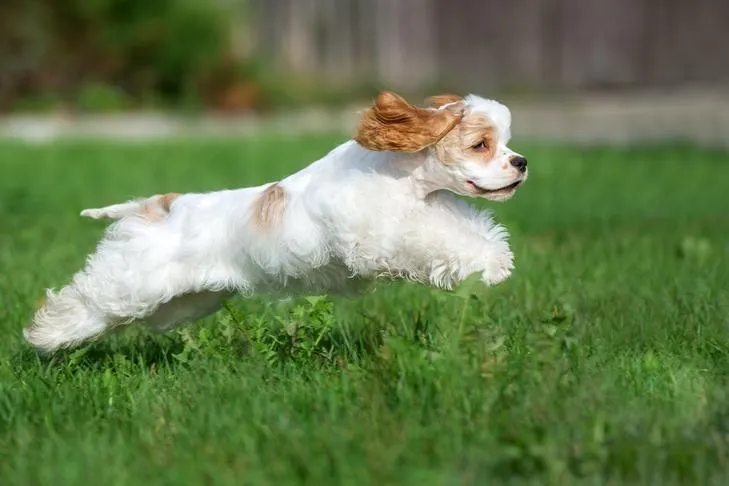Teaching your puppy to “come” when called, or establishing a reliable recall, is one of the most critical skills they will learn. Puppies, with their boundless curiosity, often find the world incredibly distracting. Each time we ask our furry friends to return to us, we’re asking them to disengage from exciting stimuli and focus on us. To build a solid recall, we must consistently show our puppies that returning to us is the most rewarding and enjoyable experience, reinforcing their natural inclination to stay close to their human companions. This guide will walk you through how to stop a puppy jumping on furniture and the essential steps to master puppy recall.
What is Reliable Recall for Puppies?
“Reliable recall” means that when you call your puppy, you are almost entirely confident they will enthusiastically respond and return to you. While no dog is a robot, and occasional lapses can occur, the goal for a life-saving skill like recall is maximum consistency.
For puppies, a strong recall is especially vital. It ensures their safety if they slip away from you, preventing them from running into dangerous situations. It also allows for more freedom in safe, enclosed environments, fostering their confidence and your bond.
Why is Puppy Recall Training Important?
Beyond the convenience of having your puppy return when called, reliable recall is fundamentally about safety. A puppy with a strong recall can be protected from various hazards, from busy streets to encountering unfamiliar dogs or dangerous objects. It’s a key component of responsible pet ownership, providing both peace of mind for you and a safer, more enriched life for your puppy. This foundational training also contributes to a puppy’s overall discipline and willingness to respond to other cues, such as training your dog not to jump on guests.
Alternatives to Off-Leash Play (Especially for Puppies)
Until your puppy has a rock-solid recall, it’s always best to keep them on a leash when outside a fenced area. There’s no shame in prioritizing safety. Consider playing in securely fenced yards, dedicated dog parks (after they are fully vaccinated), or utilizing a long leash. A long leash allows your puppy more room to explore while you maintain control and can practice recall in a controlled manner. This helps bridge the gap between initial training and confident off-leash adventures.
 Brussels Griffon standing in the grass on leash.©otsphoto – stock.adobe.com
Brussels Griffon standing in the grass on leash.©otsphoto – stock.adobe.com
Regardless of your puppy’s recall strength, always respect local leash laws. This applies to your own front yard and any unfenced areas on your property, as well as local, state, and national parks. Compliance ensures your puppy’s safety and maintains good community relations.
Starting Puppy Recall Training: The Basics
Effective puppy recall training should always feel like a fun game. Begin in a quiet, low-distraction environment, like inside your home.
- Introduce the Reward: Show your puppy a favorite toy or a highly desirable treat.
- Encourage Movement: As they start moving towards you, offer gentle praise.
- Reward: Once they reach you, immediately reward them with the treat or toy and enthusiastic praise.
- Add the Cue: After a few repetitions, when your puppy consistently looks at you and moves in your direction, introduce your chosen verbal cue (e.g., “Come!” “Here!”). Only say the cue when you are confident they are already coming. This builds a positive association.
Gradually increase the challenge. Ask your puppy to come before showing the treat, but always reward with high-value treats like small pieces of chicken, cheese, or beef liver when they arrive. Slowly add distance within your low-distraction environment. Consistency is key in teaching your puppy to understand and respond to your call, just as you would when learning how to get a dog to stop jumping up.
Fun Recall Games for Puppies
Making recall a game reinforces the positive association and makes learning enjoyable for your puppy.
- Catch Me: While walking your puppy on a long leash, get their attention. Then, turn around and run a few steps away. As your pup follows, say “Come!” or your chosen verbal cue. Stop and reward them with a treat or toy. Always ensure your puppy is attentive before running to avoid sudden leash jerks.
- Find Me: Once your puppy understands the basic concept of recall, you can build speed and confidence by calling them from another room. When your puppy finds you, shower them with praise and rewards. This hide-and-seek style game is fantastic for mental stimulation and strengthens their recall.
- Hot Potato: Involve two or more family members or friends, each with high-value treats. Stand a good distance apart and take turns calling your puppy between you. Reward your puppy each time they come to the person who called them. This game is excellent for generalizing recall with different people and in varying directions.
A common error in puppy recall training is to always end playtime immediately after a successful recall, then go home. Puppies may quickly associate “come” with the end of fun. Instead, after a recall, praise, reward, and then release your puppy to continue their activity. This teaches them that coming to you doesn’t always mean the fun is over.
Avoiding a “Poisoned Cue” in Puppy Training
Have you ever found yourself repeating, “Come! Come! Come! Please come!” to your puppy without success? This is often a sign of a “poisoned cue.” A cue becomes poisoned when it loses its clear meaning or develops a negative association for your puppy, leading them to ignore it. Overusing the word by repeating it without your puppy responding is the most common way to poison a cue.
 Cocker Spaniel running in the yard.
Cocker Spaniel running in the yard.
If you suspect your “come” cue is poisoned, the best course of action is to switch to a new verbal cue. For example, if you used “come,” try “here” or “close.” Then, go back to the very beginning of the training process, reintroducing the new cue in a low-distraction environment, much like you would approach teaching how to teach a dog not to jump on furniture.
Essential Tips for Training Your Puppy to Come Back
Mastering puppy recall requires patience, consistency, and a positive approach.
- Avoid Repeating Yourself: If you find yourself constantly repeating the recall cue, the environment might be too distracting, or your puppy may not fully understand the command at that level of difficulty. Scale back to a less distracting setting.
- Reward Eye Contact: When your puppy looks at you or voluntarily comes close, offer verbal praise and a treat. You might use many treats initially, but you’re teaching them a crucial lesson: good things happen when they are near you and paying attention.
- Never Punish for Coming: Even if your puppy took their time, always praise and reward them when they eventually come. Punishing them will create a negative association with coming to you, making future recalls harder.
- Always Reward: Use high-value treats and favorite toys, especially when your puppy is learning. You want them to associate coming with something incredibly rewarding.
- Practice Daily: Gradually increase the difficulty and the level of distractions. Moving too quickly can confuse your puppy and hinder their reliability.
- In an Emergency, Don’t Chase: If your puppy runs off, chasing them often turns it into a game for them, encouraging them to run further. Instead, try running away from your puppy, which often sparks their natural instinct to chase after you. This strategy can be surprisingly effective in getting your puppy to return, just like understanding how to stop dog from jumping on you when excited requires understanding their motivations.
Conclusion
Training your puppy to come back is an ongoing journey that builds a strong foundation of trust and safety. By making recall training fun, consistent, and always rewarding, you’ll equip your puppy with a vital life skill. Remember to be patient, celebrate small victories, and never underestimate the power of a high-value treat and enthusiastic praise. A reliable recall ensures your puppy can enjoy more freedom while remaining safe under your watchful eye.
